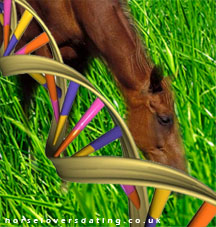Steeplechase and hurdle racing to be banned
Steeplechase and hurdle racing are some of the most exciting horse racing sports, quite popular in UK and many other countries. The adrenaline rush for the horse and rider are immense, so also is the risk of injury and possibilities of sudden death of either horse or ride or both.
Some animal welfare experts have long argued that it is a cruel sport, horses are said not to be keen about jumping. It has been demonstrated that wild horses rarely jump obstacles they come against. The argument against banning Steeplechase and hurdle racing has not succeeded until recently that it. For the first time anywhere in the world a state in Australia is banning Steeplechase and hurdle racing from 2010. The story is told much better by BBC, excerpt from BBC website follows:
The decision follows a comprehensive review of the sport and has been welcomed by animal welfare groups.
However, members of the racing industry have reacted with anger, calling it “unbelievable” and “appalling”.
Racing’s governing body in Victoria had conceded that the sport was in decline because of mounting safety concerns.
Furious response
Animal rights campaigners have described racing over hurdles and fences as not only shameful and barbaric but “morally wrong”.
An official review of the industry last year recommended a raft of new safety measures, all of which were adopted by authorities in Victoria.
Despite the changes, the fatalities have continued, with eight horses dying in races this season.
The deaths prompted an urgent investigation, which has resulted in the banning of the sport.
It has drawn a furious response from some owners, trainers and jockeys.
Steeplechase events in Victoria will go on for another year in an attempt to soften the impact of their abolition on those involved.
Neighbouring South Australia, the only other state in the country that allows jump racing, has said its programme will continue and hopes to attract trainers and horses from Victoria.
However, officials in South Australia are not celebrating and have expressed deep concerns about the long-term viability of their steeplechasing industry.

 International team of scientist from various lab all over the world has been working at decoding the genome of various animals of late, last week, it was reported that the genome of domestic pig has been full decoded, yesterday, it was the turn of the domestic horse.
International team of scientist from various lab all over the world has been working at decoding the genome of various animals of late, last week, it was reported that the genome of domestic pig has been full decoded, yesterday, it was the turn of the domestic horse. The summer is drawing to a close and it is time for horse lovers and owners to plan for the winter that looms ahead. Horses do require special care during these winter months so that they remain free of any illness or discomfort. Though they are very tolerant of cold weather and tend to favor the cold as opposed to heat, it is still advisable to get the basic care routine planned out so that you do not run into any problems going ahead.
The summer is drawing to a close and it is time for horse lovers and owners to plan for the winter that looms ahead. Horses do require special care during these winter months so that they remain free of any illness or discomfort. Though they are very tolerant of cold weather and tend to favor the cold as opposed to heat, it is still advisable to get the basic care routine planned out so that you do not run into any problems going ahead.
Recent Comments